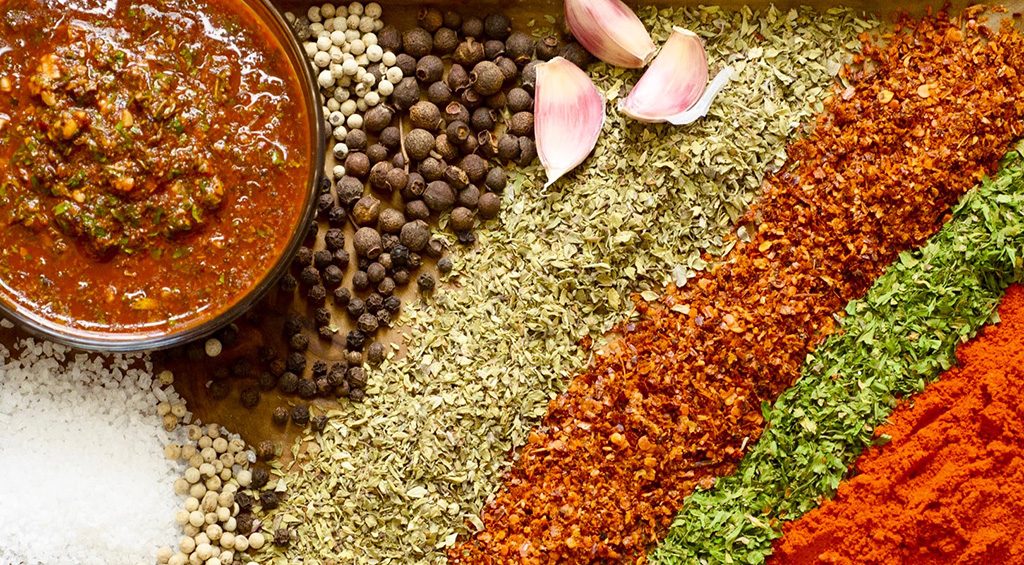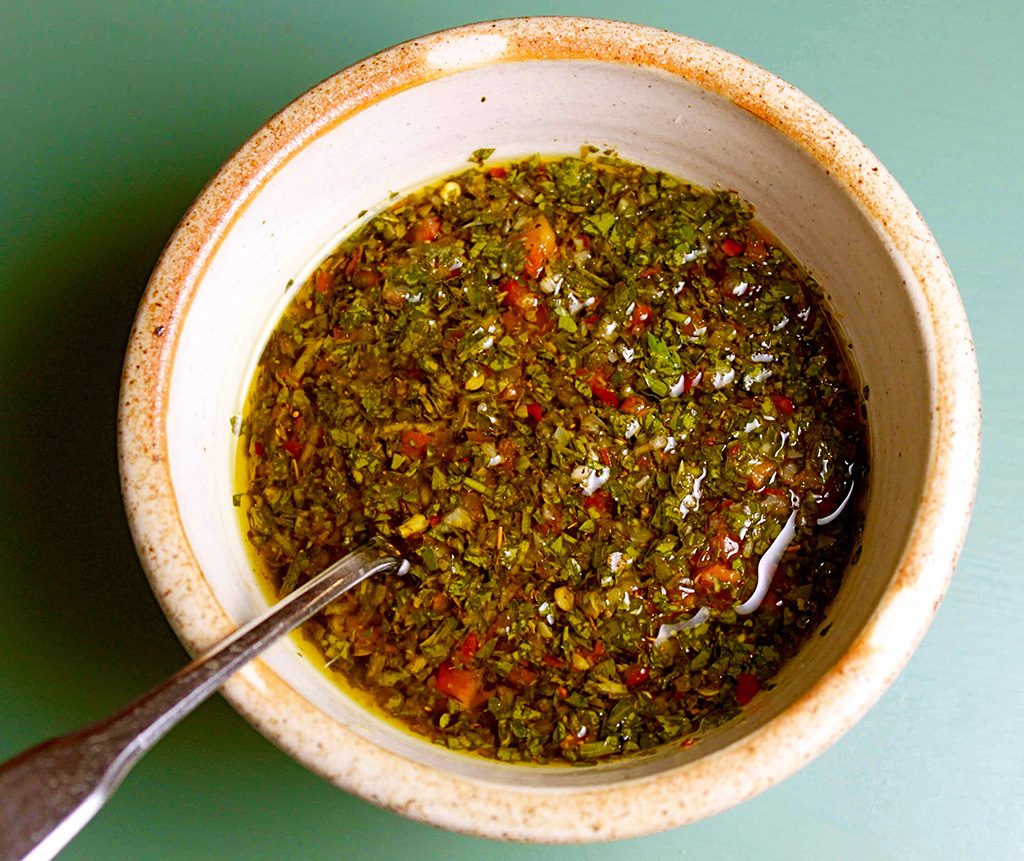
- 1 tsp. oregano
- 1 tsp. paprika
- 1 tsp. crushed red pepper flakes
- 1 small bunch of flat leaf parsley
- 3 garlic cloves
- 1/4 red onion finely chopped
- salt & pepper to taste
- 3 tbsp wine vinegar
- 1 cup olive oil (they use corn oil here)
Instructions:
Soak the oregano, parsley, and red pepper flakes in lukewarm water to hydrate for 10 minutes. After 10 minutes, mix and thieve it. Add the remaining ingredients. Leave it for 12 hours to macerate (you can keep it in a bottle or jar). Some recipes also include a dash of lime juice. Play with the amount of ingredients and adjust it to your liking!

History
Food historians tend to agree that this most famous of Argentinian sauces was probably invented by the cowboys or gauchos to give flavour to the meat they cooked over open fires out on the prairies. It is likely that they used dried herbs in their meat sauce as these were easier to transport and did not spoil like fresh herbs would.
The origin of the name ‘chimichurri’ is a little less clear. One story says that the name comes from ‘Jimmy’s curry’, Jimmy being an Irish or Englishman who is rumoured to have joined in the fight for Argentine Independence or, less romantically, to have been involved in the meat trade. His name was difficult for the Argentinians to pronounce, hence his sauce became known as chimichurri. Still other stories say the name of the sauce comes from the Basque settlers who arrived in Argentina in the 19th century, and is derived the word ‘tximitxurri’, loosely translated as “a mixture of several things in no particular order.”
It’s no surprise that Argentina’s extremely rich and varied culinary history has evolved to incorporate Spanish, Italian, French and English as well as indigenous traditions. The traditionalists still use dried herbs.
Enjoy!
Kaylee Boyle
EXPERIMENT TO DÉRIVE



